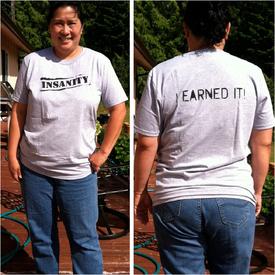HR and Calories Burned...how does it work?

CarlieeBear
Posts: 325 Member
I've been trying to understand how it works to calculate calories burned by using heart rate. Can someone explain (simply) how this is an accurate method?
0
Replies
-
I use a HR monitor for mine0
-
I use a HR monitor for mine
What I want is to understand how using a HR monitor accurately counts calories. If it's accurate, then it doesn't matter what activity you do as long as you do it intensely enough to raise and sustain your heart rate.0 -
It's a formula used as a general estimate based on your age, weight, height, and activity level.
http://www.livestrong.com/article/73315-calculate-calories-burned-based-heart/0 -
Ok....I don't seem to have worded my question very well. I'm skeptical of the concept. I don't want to know how it's figured out. I want to know why this is an accurate method for determining calories burned. It just doesn't make sense to me.0
-
Below is an excerpt from my blog on this subject:First of all--how do HRMs count calories? First thing is that HRMs do NOT measure caloric expenditure--neither directly nor indirectly. HRMs measure heart rate and that's it. They estimate caloric expenditure during steady-state cardiovascular exercise using the relationship between heart rate and oxygen uptake (or VO2).
The most commonly accepted method for measuring the calories burned for a particular activity is to measure oxygen uptake (VO2).
During *steady-state*, aerobic exercise, oxygen is utilized at a relatively consistent rate depending on the intensity of the exercise. There is an observable and reproducible relationship between heart rate and oxygen uptake.When workload intensity increases, heart rate increases and vice versa.
If we have some individual data--resting heart rate, maximum heart rate, VO2 max, weight--it is possible to make reasonably accurate estimates of caloric expenditure based on the percentage of HRmax or percentage of HRreserve at which someone is working.
For example, we know that 70% of HRmax is equivalent to approx 57% of VO2max. If we know that person's VO2 max is 12 METs and they are working at 70% of HRmax, we can estimate that they are working at (57% x 12 METS) or 6.8 METs. If that person weighs 80 kg, we can estimate that they are burning ~545 Cals/hour (MET value x Body wt in kg).
The major HRM manufacturers (Polar and Suunto) use much more sophisticated sensing technology and algorithms, but they are still based on the same basic principle--the association of HR to oxygen uptake.
So, it must be emphasized again: HRMs calorie counts are only accurate when there is a consistent and measurable relationship between heart rate and oxygen uptake. That means exercises and exercise movements that are aerobic in nature and that are performed at intensities between 40% of VO2 max and the lactate threshold.
If you want to read the whole thing, follow this link:
http://www.myfitnesspal.com/blog/Azdak/view/the-real-facts-about-hrms-and-calories-what-you-need-to-know-before-purchasing-an-hrm-or-using-one-214720
This discussion has been closed.
Categories
- All Categories
- 1.4M Health, Wellness and Goals
- 398.5K Introduce Yourself
- 44.7K Getting Started
- 261K Health and Weight Loss
- 176.4K Food and Nutrition
- 47.7K Recipes
- 233K Fitness and Exercise
- 462 Sleep, Mindfulness and Overall Wellness
- 6.5K Goal: Maintaining Weight
- 8.7K Goal: Gaining Weight and Body Building
- 153.5K Motivation and Support
- 8.4K Challenges
- 1.4K Debate Club
- 96.5K Chit-Chat
- 2.6K Fun and Games
- 4.8K MyFitnessPal Information
- 18 News and Announcements
- 21 MyFitnessPal Academy
- 1.5K Feature Suggestions and Ideas
- 3.2K MyFitnessPal Tech Support Questions


